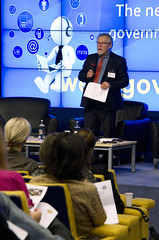
Get More Information Here:
Where To Look To Search The Premium Wage Protection Policy
by
Winston Colindres
The Social Security and also Supplemental Safety Income handicap programs would be the largest of several Federal programs that supply assistance to those with disabilities. While these two programs will vary in several ways, both are usually administered because of the Social Stability Administration in support of individuals that have a handicap and meet medical standards may be entitled to benefits below either system.
The Cultural Security office should check your medical history to make certain you be entitled to disability advantages. The Social Security workplace is one way to get impairment benefits, but generally these benefits won\’t be substantial enough for people.
Disability insurance can be acquired through numerous insurance companies. In the big event that you\’ll be disabled, that insurance may serve seeing that financial safety. You will receive a percentage of your respective gross income from the disability insurance policies, income that can ensure your financial security.
You don\’t have to go throughout the Social Safety measures Office to carry a disability insurance policies, nor to receive the benefits from that plan. The Sociable Security impairment program just isn\’t related to help any disability insurance policy that you get.
Individual handicap insurance is really a basic concept. It truly is an insurance coverage product designed to replace between 45-60% of this gross income on the tax-free foundation should some sort of sickness or even illness prevent you from earning an income in the occupation. Every disability insurance plan from every insurance carrier is distinctive, this seriously isn\’t a merchandise to simply go shopping for the most competitive rate. To pick the cheapest disability insurance plan available on the market is for you to throw income away. The chances of acquiring paid any monthly help under a low priced contract can be significantly lower than receiving advantages from a good quality contract.
Many people are aware of two types of disability insurance: short-term disability, and long-term incapacity. Short-term handicap insurance is roofed in a gains package with a variety of employers, and usually provides an income inside early a part of disability. Short-term impairment insurance usually provides coverage for the period of a few months, and does not exceed any two-year phrase.
Longer-term incapability, however, can last for any period of a long period. These kinds of policies can be included began this morning employment, within a benefits deal, but numerous purchase most of these disability insurance policies individually.
Where disability insurance coverage goes, however, there are nevertheless more policies to find out about. One form of disability insurance is the Own-Occupation Incapacity Insurance. Madness of this kind of policy says:
The inability to execute the stuff and substantial duties of your regular career, the insurance firm will consider your occupation for being the occupation you might be engaged in at that time you turn out to be disabled, they will probably pay the claim despite the fact that are in some various other capacity.
A different type of disability insurance will be the Income Replacing Insurance. This is a very popular sort of disability insurance coverage, and most insurance agents have an understanding of this insurance policy. The vocabulary of this sort of disability insurance policies reads:
Because of sickness or maybe injury you can\’t perform the material and also substantial duties of this occupation, and are not engaged in a other work. \”
Widespread in worker benefits plans, Gainful Occupation Coverage is another popular way of disability insurance plan. The language here is worded meticulously:
Because of sickness as well as injury you can\’t perform your material in addition to substantial obligations or ones occupation, or any occupation that you are deemed reasonably qualified by knowledge, training, or experience.
Find it With This Link
life insurance
Article Source:
ArticleRich.com

